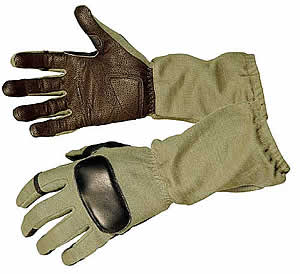One item of kit that is often overlooked is quality hand protection. When I first started playing, I thought gloves were more part of an impression than essential kit, but man was I proved wrong. I think I played maybe 3 games before I realized how wrong I was. From cuts, to bb-hits, to burrs and even a bent back finger nail… I paid the price for my ignorance. The great glove search was on, and after reading many reviews and looking at pricing, I got no where. Only after I started talking to the local ‘vets’ did I discover the joy of the Hatch Operator series gloves.
From Hatch’s website:
Designed by and specifically for military use, this glove allows you to perform with surgical precision. The ergonomic fit and tactile sensation found in these gloves are unmatched.
- Constructed of goatskin leather palms and sewn with abrasion, cut and heat-resistant nylon thread
- Goatskin provides superior abrasion and tear resistance over cowhide or sheepskin, yet offers a comparable thickness for comfort and durability
- KEVLAR® construction provides cut resistance, heat, and flash protection
- SOG-700 contains 85% Nomex® and 15% Kevlar® blend
- Will not support flame or combust up to 800° F, (427° C)
- Elasticized wrist keeps the Operator™ taut, while the elasticized gauntlet keeps out foreign objects and prevents snagging
- Patented cut-ring stitching allows optional removal of the index finger for trigger control without unraveling the remaining edge
- Available in Black (SOG-600), Sage Green (SOG-650), Desert Tan (SOG-700), Foliage (SOG-750), and New Coyote (SOG-800)
There is nothing about these gloves I don’t love. The elastic wrist keeps debris out while the additional forearm cover protects you from scratches as well as lessening the ever-stinging forearm hit. The goat skin palms grip rock and cement to prevent sliding and hard landings. For those that need the ‘feel’ of the trigger the cut-ring stitching allows you to remove the index finger tip of the glove without having fraying issues that eventually ruin lesser quality gloves. I have only had to replace my gloves once, when I wore out one of the fingers (and because I thought I lost them in-field at LC7). So I technically have 2 pair and doubt I will ever be in the market for another for many years to come. They aren’t the cheapest gloves, clocking in at around $50, but they are worth every penny.

